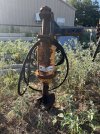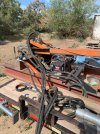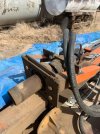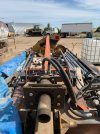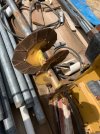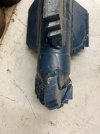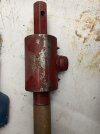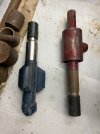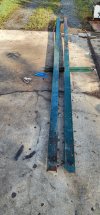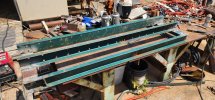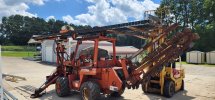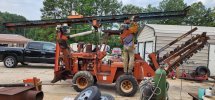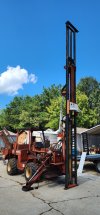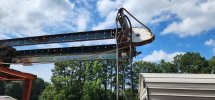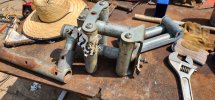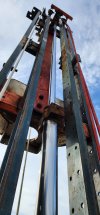Georgia Iron
Senior Member
- Joined
- May 6, 2012
- Messages
- 878
- Location
- USA - Georgia
- Occupation
- Concrete building slab and grading contractor
After looking at my hydraulics, I decided the easiest and cheapest way to add another hydraulic function would be to install a double selector control valve.
Since several functions on the machine once set will not need to be used again while the machine is working. I decided that a double acting valve could shift fluid control from one circuit to another.
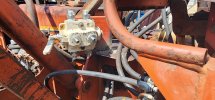
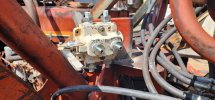
The way it works is fluid from your spool control enters / exits the center ports, then depending on which way the valve is set it either uses the top 2 ports or the bottom 2 ports.
This saved me from needing to plumb into the PB port on the 6 spool control valve I have. It would have taken larger hoses and more work to add another spool. The cost of a new spool would have been about $50.00 plus hose tie-ins.
I will pull fluid away from an outrigger once it is set into place.
Total Cost used on ebay was $100.00. I also needed 6 - 1" npt fittings to jic #6 at $35.00
I should have enough hoses laying around to tie right into this selector. It was hot today. We have been having heavy rains late in the day or at night causing all dirt work to stop. Been canceled 4 different times on grading work in the last 2 weeks.
The daily temps have been hitting 95* with high humidity. Heat warnings of 111*. Standing in the sun welding and turning a wrench had not been too fun lately.
I have been on the fence about extending the boom length. I needed a mast 25' long and only had 18 or 20'. I decided to go with what I had on hand. This will limit me on just being able attach one drill stem section at a time. I am not sure it is worth the effort to extend it now or if I should test this out first to see if it has a chance of working at all. Odd's are if I don't extend it now before sending it off to work it will never happen.
Since several functions on the machine once set will not need to be used again while the machine is working. I decided that a double acting valve could shift fluid control from one circuit to another.


The way it works is fluid from your spool control enters / exits the center ports, then depending on which way the valve is set it either uses the top 2 ports or the bottom 2 ports.
This saved me from needing to plumb into the PB port on the 6 spool control valve I have. It would have taken larger hoses and more work to add another spool. The cost of a new spool would have been about $50.00 plus hose tie-ins.
I will pull fluid away from an outrigger once it is set into place.
Total Cost used on ebay was $100.00. I also needed 6 - 1" npt fittings to jic #6 at $35.00
I should have enough hoses laying around to tie right into this selector. It was hot today. We have been having heavy rains late in the day or at night causing all dirt work to stop. Been canceled 4 different times on grading work in the last 2 weeks.
The daily temps have been hitting 95* with high humidity. Heat warnings of 111*. Standing in the sun welding and turning a wrench had not been too fun lately.
I have been on the fence about extending the boom length. I needed a mast 25' long and only had 18 or 20'. I decided to go with what I had on hand. This will limit me on just being able attach one drill stem section at a time. I am not sure it is worth the effort to extend it now or if I should test this out first to see if it has a chance of working at all. Odd's are if I don't extend it now before sending it off to work it will never happen.
Last edited:


